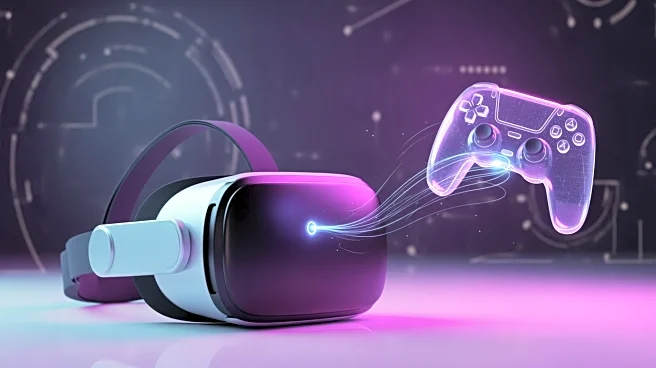What's Happening?
The gaming industry is set to undergo significant changes by 2026, with advancements in virtual reality (VR) and augmented reality (AR) leading the way. Companies like Sony and Microsoft are integrating these technologies to enhance gaming experiences,
particularly in esports, where immersive environments can be created for spectators. The industry is also seeing the rise of cloud gaming, which allows players to stream games without downloading them, and blockchain technology, which enables the use of NFTs for in-game assets. These innovations are expected to make gaming more accessible and dynamic, with predictions of over 480 million cloud gaming users by the end of 2026.
Why It's Important?
The integration of VR and AR in gaming is poised to transform how players interact with games, offering more immersive and interactive experiences. This shift could lead to increased engagement and new revenue streams for gaming companies. The adoption of blockchain technology for in-game assets presents economic opportunities for gamers, allowing them to own and trade digital items securely. As these technologies become more mainstream, they could redefine the gaming landscape, making it more inclusive and accessible to a broader audience. The advancements in gaming tech also highlight the industry's potential to innovate and adapt to changing consumer preferences.
What's Next?
As the gaming industry continues to evolve, companies are likely to invest more in VR and AR technologies to enhance player experiences. The focus will be on creating more realistic and interactive environments, particularly in esports, where these technologies can offer new ways for fans to engage with events. The use of blockchain for in-game assets is expected to grow, with companies exploring interoperability between games. This could lead to a more interconnected gaming ecosystem, where players can transfer assets across platforms. The industry will also continue to explore cloud gaming, making high-quality gaming accessible on low-end devices.














